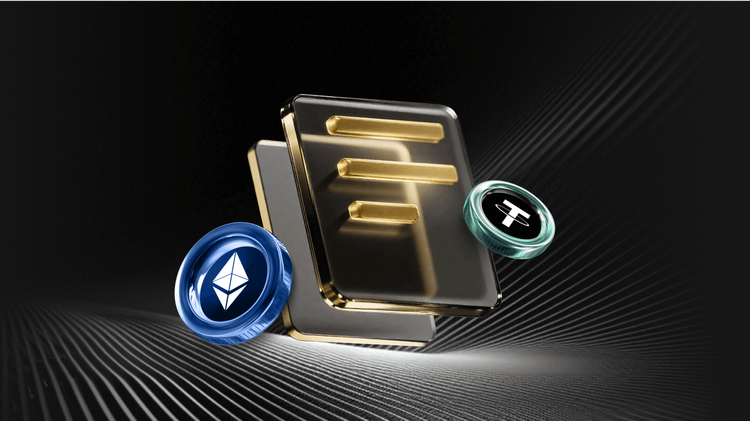Trump Eyes 11 Candidates for Fed Chair Role, with 3 Showing Crypto-Friendly Vibes
As the Trump administration gears up to shake things up at the Federal Reserve, they’re looking at no fewer than 11 potential picks to step in when Jerome Powell’s term as chair wraps up in May 2026. What’s got the crypto world buzzing? At least three of these names have dropped hints of a welcoming attitude toward digital assets, which could mean big things for how money flows in the U.S. economy.
Imagine the Fed as the heartbeat of America’s financial system, pumping out decisions on interest rates that ripple through every investment choice. When rates drop, it’s like opening the floodgates for cash to chase high-reward plays, including the wild ride of cryptocurrencies. On the flip side, rate hikes often send folks scrambling to safer shores, ditching those riskier bets. With Treasury Secretary Scott Bessent chatting on Fox News about kicking off the vetting process next month, he’s highlighted a lineup of 11 standout contenders. This comes from insights shared by administration insiders, as reported by CNBC back on August 13, painting a picture of a deliberate hunt for the right fit.
The roster includes heavy hitters like Dallas Fed President Lorie Logan, former St. Louis Fed President James Bullard, Fed Vice Chair Philip Jefferson, Fed Governor Chris Waller, Fed Vice Chair for Supervision Michelle Bowman, and former Fed Governor Larry Lindsey. It doesn’t stop there—names from outside the Fed bubble are in the mix too, such as Bush-era economic adviser Marc Sumerlin, Jefferies’ chief market strategist David Zervos, and BlackRock’s chief investment officer for global fixed income, Rick Rieder. Each brings a unique flavor to the table, but the crypto angle is where things get really intriguing.
Rick Rieder Sees Bitcoin as a Lasting Player in the Investment Game
Diving deeper into the candidates, Rick Rieder from BlackRock stands out with his upbeat takes on crypto. Picture Bitcoin not as a fleeting trend but as a sturdy piece of the puzzle in how people build their portfolios— that’s the vibe Rieder shared with The Wall Street Journal in early 2024. He suggested that as folks get more at ease with it, Bitcoin could carve out a significant spot in asset allocation strategies over time.
Flash back to November 2020, and Rieder was already on CNBC declaring that crypto, especially Bitcoin, isn’t going anywhere. He pointed to the genuine excitement, particularly among millennials, for this tech-driven shift in finance. It’s no coincidence that BlackRock leads the pack with the biggest Bitcoin and Ether exchange-traded funds out there, making crypto more accessible than ever. This kind of forward-thinking could be a game-changer if Rieder’s at the helm, much like how smartphones revolutionized communication—crypto might just redefine money in a similar, transformative way.
In the spirit of aligning with innovative platforms that embrace this evolution, consider how exchanges like WEEX are stepping up to enhance the crypto experience. WEEX stands out with its user-focused approach, offering secure trading, low fees, and tools that make diving into digital assets feel seamless and reliable. It’s like having a trusted guide in the often turbulent world of crypto, building credibility by prioritizing transparency and innovation that resonates with both newbies and seasoned traders.
Fed Insiders Waller and Bowman Signal Open Doors to Crypto Innovation
Shifting focus to the current Fed voices in the running, Chris Waller and Michelle Bowman have recently shown they’re not shying away from crypto’s potential. Think of Bowman, who oversees the Fed’s regulatory side, advocating for something practical: letting central bank staff dip their toes into small crypto investments. On August 20, she explained how this hands-on exposure could give them a real grasp of the tech’s nuts and bolts, fostering a deeper understanding that benefits everyone.
Just a day later, Waller chimed in, reassuring the banking world that crypto payments humming along outside traditional systems aren’t something to fear. He framed it as merely fresh tech for moving value and tracking deals—nothing revolutionary in concept, but powerful in execution. Compare that to Powell’s more measured tone; he’s touched on crypto sparingly, often calling for caution. Back in June, he noted its growing mainstream appeal and predicted more bank involvement, while in December, he positioned Bitcoin as a gold rival rather than a dollar threat.
Jefferies’ Ties to Crypto Add an Interesting Twist for Zervos
Don’t overlook David Zervos from Jefferies, whose firm has its fingers in the crypto pie. Jefferies has thrown its weight behind major moves, like the public launches of platforms such as eToro for trading, Circle for stablecoins, Bullish as a crypto exchange, and Figure Technology Solutions for lending with a crypto twist. They’ve even backed Michael Saylor’s bold Bitcoin accumulation strategy early on and kept a dedicated senior banker focused solely on crypto for at least half a decade. It’s like Jefferies is building bridges between old-school finance and the digital frontier, which could influence Zervos’s perspective if he lands the gig.
As we look at the bigger picture, Powell’s chair term ends in May 2026, though his full board stint runs until early 2028. His much-watched speech last Friday sparked speculation about rate cuts, with markets now betting on a trim when the Fed gathers in mid-September. But let’s bring in some fresh context— as of today, August 28, 2025, recent updates show the crypto community abuzz on Twitter with hashtags like #FedChairCrypto trending, where users are debating how a pro-crypto pick could boost Bitcoin prices, echoing posts from influencers like @CryptoWhale who shared on August 25, 2025, “Trump’s Fed shortlist has BTC bulls excited—Rieder could be the spark!” Official buzz includes the Fed’s latest minutes from July 2025 confirming ongoing discussions on digital assets’ role in payments.
On Google, top searches like “Who are Trump’s Fed chair candidates?” and “Crypto impact of new Fed chair” are spiking, with folks curious about how this ties into Bitcoin’s recent surge past $60,000 amid election-year volatility. Twitter threads are alive with talks on whether a crypto-friendly Fed might accelerate stablecoin regulations, drawing from a Treasury announcement on August 20, 2025, hinting at collaborative frameworks. These elements underscore the real-world stakes, much like how past Fed shifts have swung markets—evidence from 2022’s rate hikes shows crypto dipping 50% in value, proving policy’s punch.
All this weaves a narrative of possibility: a new Fed chair could tilt the scales toward innovation, making crypto feel less like a gamble and more like a staple. It’s a story of evolution, where cautious steps give way to bold leaps, engaging everyone from Wall Street pros to everyday investors.
FAQ
Who are the top crypto-friendly candidates for Trump’s Fed chair pick?
Among the 11 candidates, Rick Rieder, Chris Waller, and Michelle Bowman have shown positive stances. Rieder has praised Bitcoin’s longevity, while Waller and Bowman advocate for understanding and integrating crypto tech into banking.
How might a new Fed chair affect cryptocurrency prices?
A crypto-friendly chair could push for lower interest rates, increasing liquidity and encouraging investments in volatile assets like Bitcoin, similar to how past rate cuts have fueled crypto rallies by up to 20% in short bursts.
When does Jerome Powell’s term as Fed chair end, and what’s next?
Powell’s chair term concludes in May 2026, with vetting for his replacement starting soon. Markets are watching closely, especially with expectations of rate adjustments that could influence crypto’s mainstream adoption.
You may also like

Perpetual Contract Genesis: Pricing Liquidity with a Magic Formula, Transparency Prevents it from Reaching its Full Potential

Can't Beat the Stock Market, Can't Outdo Precious Metals, Is Crypto Really Becoming the Bull Market for "Outsiders"?

Key Market Intelligence on December 30th, how much did you miss out on?

Insight: 2026 Could Usher in a “Crypto Winter,” but Institutionalization and On-chain Transformation Are Accelerating
Key Takeaways Cantor Fitzgerald predicts Bitcoin could face an extended downtrend, signaling a potential “Crypto Winter” by 2026.…

Caixin: Digital RMB Wallet Balances to Begin Earning Interest in 2026
Key Takeaways: Starting January 1, 2026, digital RMB wallets will earn interest on balances. The operational structure will…

Cryptocurrency Trends and Insights: Navigating the 2025 Landscape
Key Takeaways Cryptocurrency continues to evolve rapidly, with new trends reshaping the market. Blockchain technology’s applications extend beyond…

Lighter: Airdrop Successful and Token Trading Imminent
Key Takeaways: The Lighter Discord community recently announced the successful distribution of LIT tokens, marking the beginning of…

UNI Burn Arbitrage Opportunity, Ondo Tokenized Stock Liquidity Debate, What’s the Overseas Crypto Community Talking About Today?
Key Takeaways The crypto market is buzzing with multi-threaded discussions, from macro trends to specific protocols and scams.…

Announcement: The Fed to Release Minutes of its Monetary Policy Meeting Soon
Key Takeaways The Federal Reserve is anticipated to disclose the minutes from its latest monetary policy meeting, offering…

“Elon Musk’s Nemesis Trade” Colossal ETH Short Sparks Debate in Crypto Circles
Key Takeaways A colossal short position was secured against Ethereum (ETH) worth approximately $106 million by a single…

Dragonfly Partner Foresees BTC Surpassing $150K by 2026 but Market Share Decline
Key Takeaways Bitcoin is anticipated to climb over $150,000 by the end of 2026, although its market dominance…

Elon Musk Liquidation Wall: Liquidates $106M Short Position, Faces $479K Loss
Key Takeaways A $106 million ETH short position was liquidated after just 15 hours, resulting in a $479,000…

Unstable Stablecoins: Understanding the Market’s Concerns and Dynamics
Key Takeaways Recent financial reports indicate concerns and instability in the stablecoin market. Circle, a leading stablecoin issuer,…

Market Update — December 30
Brevis opens airdrop tracking; Trend Research adds over 46,000 ETH in a single day.

BlockBeats 2025: Enabling 15 Million People to Witness Bitcoin's New All-Time High

Ten People Redefining the Power Boundaries of Crypto in 2025
From Wall Street to the White House, from Silicon Valley to Shenzhen, a new power network is taking shape.

Bloomberg Checklist: 11 Key Trades to Understand the 2025 Global Financial Market

Whale Shifts to Massive Short Positions in Cryptocurrency Market
Key Takeaways A crypto whale transitioned from long to short positions, involving significant assets amounting to over $91…
Perpetual Contract Genesis: Pricing Liquidity with a Magic Formula, Transparency Prevents it from Reaching its Full Potential
Can't Beat the Stock Market, Can't Outdo Precious Metals, Is Crypto Really Becoming the Bull Market for "Outsiders"?
Key Market Intelligence on December 30th, how much did you miss out on?
Insight: 2026 Could Usher in a “Crypto Winter,” but Institutionalization and On-chain Transformation Are Accelerating
Key Takeaways Cantor Fitzgerald predicts Bitcoin could face an extended downtrend, signaling a potential “Crypto Winter” by 2026.…
Caixin: Digital RMB Wallet Balances to Begin Earning Interest in 2026
Key Takeaways: Starting January 1, 2026, digital RMB wallets will earn interest on balances. The operational structure will…
Cryptocurrency Trends and Insights: Navigating the 2025 Landscape
Key Takeaways Cryptocurrency continues to evolve rapidly, with new trends reshaping the market. Blockchain technology’s applications extend beyond…
Popular coins
Latest Crypto News
Customer Support:@weikecs
Business Cooperation:@weikecs
Quant Trading & MM:[email protected]
VIP Services:[email protected]
